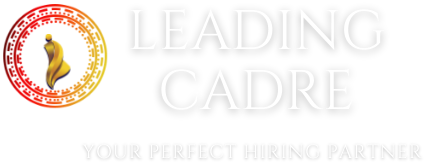Introduction
Recruiting and retaining employees is a critical challenge organizations face in today’s competitive job market. From the struggle to attract skilled candidates in the face of intense competition to the ever-changing job preferences of the modern workforce, companies must navigate numerous hurdles. Additionally, skills gaps, limited resources, negative employer brand perception, and high turnover rates further complicate the process. Overcoming these challenges requires organizations to adapt their recruitment strategies, prioritize employee development, and foster a positive employer brand. In this article, we will delve into the key challenges in recruiting and retaining employees and explore effective strategies to overcome these obstacles. By understanding and addressing these challenges, organizations can attract and retain top talent, fostering a strong and successful workforce.
Why both Recruitment and Retaining Employees are vital?
Recruiting the right employees and retaining them is essential for any business to be successful. Recruitment and retention are important because they directly impact a company’s ability to grow and remain competitive.
When an organization has effective recruitment and retention strategies, it attracts top talent that can help move the business forward. When done correctly, recruitment helps organizations fill open positions with qualified individuals who are the right fit for the job and culture. Indeed, organizations implementing robust onboarding procedures witness a remarkable 82% enhancement in retaining new hires, coupled with a significant surge of over 70% in productivity. Additionally, effective recruitment helps organizations reduce their turnover rate and promote a more positive work environment.
Retention is also critical for businesses to succeed in today’s competitive landscape. When an organization has effective retention strategies in place, it allows them to keep high-performing employees for longer periods of time. Research shows that engaged employees are 59% less likely to look for a job with a different company in the next year. This results in higher productivity, increased innovation, and a stronger company reputation.
Investing in employee retention has financial implications as well. It’s estimated that the cost of replacing a current employee can range from 50% to 200% of their annual salary considering recruitment, training, lost productivity & other factors. On the other hand, a Harvard Business Review study found that a 5% increase in employee retention can lead to a 25% to 85% increase in profitability. In today’s competitive business landscape, effective recruitment and retention strategies are not just optional—they are imperative for sustainable success.
Why Recruitment and Retention are Often Discussed Together
Recruitment and retention are two critical aspects of any organization’s workforce management strategy. These two concepts are often discussed together because they are closely interconnected. Recruitment refers to the process of attracting and hiring new employees, while retention focuses on keeping the existing Talented employees engaged and satisfied in their roles. When organizations face high turnover rates, it becomes imperative to analyze and improve both recruitment and retention efforts. A company may have a robust recruitment process in place, but if they struggle to retain their employees, it can lead to increased costs and productivity losses. On the other hand, if an organization is successful in retaining employees but fails to attract new talent, it may face challenges in meeting its growth objectives. Therefore, organizations need to strike a balance between recruitment and retention strategies to ensure a steady and motivated workforce.
How Recruitment Affects Employee Retention
Recruitment plays a crucial role in determining employee retention rates. A report by Deloitte found that organizations with strong recruiting practices have 40% lower turnover rates compared to those with weaker recruitment processes. When a company recruits top talent, it increases the likelihood of retaining those employees in the long run. This is because the recruitment process allows companies to identify candidates who are not only skilled and qualified for the job, but also fit well within the organization’s culture and values. By selecting candidates who align with the company’s mission and vision, employers create a strong foundation for employee engagement and satisfaction. Furthermore, effective recruitment practices can lead to higher levels of job satisfaction, which in turn decreases the likelihood of turnover.
On the other hand, a poor recruitment process can result in hiring individuals who are not the right fit for the organization, leading to higher turnover rates. Therefore, it is essential for companies to invest time and resources into developing effective recruitment strategies to ensure they attract and retain the best talent.
What are the Challenges in Recruiting and Retaining Employees?
Recruiting and retaining employees in today’s dynamic job market come with a set of challenges that organizations must navigate to ensure a robust and engaged workforce. While attracting top talent and nurturing their commitment is vital for business success, several hurdles can hinder these efforts. Here are some key challenges that organizations often face in recruiting and retaining employees:
- Competition for Talent: In a competitive job market, skilled professionals are in high demand. Organizations vie for the same pool of talented individuals, making it challenging to stand out and attract the right candidates.
- Changing Workforce Expectations: Modern employees seek more than just a paycheck; they prioritize work-life balance, growth opportunities, and a meaningful work environment. Meeting these evolving expectations requires strategic adaptation.
- Skill Mismatch: Aligning job requirements with candidate skills can be tricky. Sometimes, the right candidates might lack specific skills, while those with the necessary skills might not be the best cultural fit.
- Employee Turnover: High turnover rates can disrupt team dynamics, lead to increased workload for remaining employees, and result in financial losses due to recruiting and training costs.
- Cultural Fit: Ensuring candidates align with the organization’s culture and values is crucial. Mismatch in cultural fit can lead to decreased job satisfaction and higher turnover rates.
- Candidate Experience: A poor recruitment experience can deter potential candidates, influencing their perception of the organization. A survey by CareerBuilder found that 68% of candidates believe their experience during the hiring process reflects how the company values its employees1.
- Salary and Compensation: Competitive compensation is a major factor in both attracting and retaining employees. If compensation packages fall short of industry standards, it becomes difficult to secure and retain top talent.
- Lack of Growth Opportunities: Employees often seek opportunities for skill development and career advancement. Organizations that don’t offer these pathways risk losing valuable talent to competitors.
- Inadequate Onboarding: Effective onboarding is crucial for new employees to integrate smoothly into the organization. Insufficient or disorganized onboarding can lead to dissatisfaction and early exits.
- Workplace Flexibility: In the era of remote work and flexible arrangements, organizations that fail to adapt to changing work preferences may struggle to attract and retain employees seeking flexibility.
- Employee Engagement: A disengaged workforce is more likely to seek opportunities elsewhere. Organizations must invest in engagement initiatives to keep employees motivated and committed.
- Diversity and Inclusion: Creating an inclusive environment that welcomes employees of diverse backgrounds can be a challenge. Failing to address diversity and inclusion concerns may lead to attrition.
- Leadership and Management: Poor leadership and inadequate management practices can erode employee trust and satisfaction, contributing to turnover.
Addressing these challenges requires a multifaceted approach that encompasses strategic recruitment, effective onboarding, continuous engagement, competitive compensation, growth opportunities, and a commitment to fostering a positive work environment. Organizations that navigate these challenges successfully will position themselves to attract and retain a talented and dedicated workforce.
TOP Recruitment and Retention strategies that work together
Company Culture and Branding
- Strengthen Your Company Culture to Overcome Most Challenges: Cultivating a strong company culture fosters a sense of belonging and purpose among employees. A positive culture aligns teams, drives productivity, and enhances employee loyalty, making it easier to attract and retain top talent.
- Clearly Define Your Brand and What It Means to Work for You: Articulating a compelling employer brand is essential. Clearly communicate your organization’s values, mission, and unique attributes to potential candidates. This clarity helps candidates understand the culture they’d be part of and what they can expect as employees.
- Promote a Culture of Diversity, Equity, and Inclusion: Prioritizing diversity and inclusion fosters innovation and broadens perspectives within the workforce. By actively promoting an environment where every individual feels valued and respected, organizations attract a diverse range of talent that enriches the workplace.
Recruitment Strategy
- Source and Attract More Candidates: Utilize multiple sourcing channels such as job boards, social media, and employee referrals to reach a wider candidate pool. This increases the chances of finding candidates who align with your company’s values.
- Train Your Interviewers: Equip interviewers with the skills to assess both technical competencies and cultural fit. A well-trained interview panel ensures consistent evaluation and minimizes biases.
- Agree on a Candidate Profile First: Before recruiting, establish a clear understanding of the skills, qualities, and traits desired in a candidate. This shared profile guides the selection process toward the right fit.
- Hire for Potential, Not Experience: Consider candidates’ potential to grow and adapt. Skills can be developed, but attributes like adaptability and a growth mindset contribute to long-term success.
- Identify People Who Are Interested in Your Company for the Long Term: Seek candidates genuinely interested in your organization’s mission and values. Their alignment suggests a higher likelihood of long-term commitment.
- Keep an Eye on Your Competitors: Monitor industry trends and competitors’ practices. Understanding what appeals to top talent in your field can help you refine your recruitment strategy.
- Use Data and Feedback to Your Advantage: Analyze recruitment data to identify bottlenecks and areas for improvement. Gather feedback from job seekers to enhance the overall recruitment experience.
Employee Retention Strategy
- Start Asking Your Employees Questions: Regularly seek Employee feedback to understand their needs, concerns, and aspirations. Conduct Employee surveys, this information guides targeted retention of employees
- Offer Small Perks to Improve Employee Retention: Implement small perks such as flexible work arrangements, wellness initiatives, or recognition programs. These enhancements contribute to employee satisfaction, boosting employee morale and engagement.
- Lifestyle Benefits Can Make or Break Employee Loyalty: Lifestyle benefits like work-life balance, remote work options, and professional development opportunities are integral to retaining employees seeking holistic well-being.
- Create Career Pathways: Outline clear growth paths within the organization. Employees are more likely to stay when they see avenues for skill development and advancement.
- Promote From Within: Recognize and nurture internal talent. Promoting employees to higher roles not only boosts morale but also demonstrates a commitment to employee growth.
By intertwining these strategies, organizations establish a comprehensive approach that attracts the right candidates and cultivates lasting employee loyalty.
How Recruitment Agencies Elevate Talent Acquisition and Retaining Employees Objectives
In the ever-evolving landscape of talent acquisition and workforce dynamics, organizations are turning to recruitment agencies as strategic partners to help them secure and retain top-notch talent for critical positions. The collaboration between employers and recruitment agencies has evolved beyond mere recruitment facilitation, extending into the realm of talent retention.
The partnership between an employer and a recruitment agency extends far beyond the initial hiring process. By harnessing their specialized expertise, extensive networks, and streamlined processes, recruitment agencies contribute to successful talent acquisition. Furthermore, their emphasis on candidate fit, cultural alignment, and talent development aligns with the employer’s retention goals, fostering an environment where talent thrives and endures. As organizations continue to prioritize strategic talent management, the role of recruitment agencies becomes increasingly integral in shaping a workforce that’s not only recruited effectively but also retained for long-term success.
Conclusion
In conclusion, recruiting and retaining employees is a multifaceted endeavor that requires careful consideration of various challenges. From fierce competition for talent and the existence of skills gaps to evolving job preferences and limited resources, organizations must navigate these hurdles to attract and retain top performers.
To overcome these challenges, it is essential for organizations to adapt their recruitment strategies to align with changing job preferences, build a positive employer brand, and offer opportunities for growth and development. Additionally, investing in effective onboarding and training programs can lead to better employee retention.
Addressing the causes of high turnover rates, such as inadequate compensation, lack of growth opportunities, and poor leadership, is crucial for retaining valuable employees. Furthermore, in the remote work era, creating a strong remote work culture and providing support and effective communication to remote employees are vital for maintaining engagement and retention.
By recognizing and proactively tackling these challenges, organizations can build a strong, dedicated, and resilient workforce. Ultimately, a strategic and comprehensive approach to recruitment and retention will foster an environment where employees feel valued, motivated, and equipped to contribute to the organization’s success.
FAQ’s
Q: How does competition for talent impact recruitment and retention efforts? A: Intense competition for talent means organizations must actively differentiate themselves to attract top candidates. It also increases the risk of losing valued employees to competitors. To mitigate these challenges, companies need to offer competitive compensation packages, provide opportunities for growth and development, and create a positive work environment.
Q: What role does employer brand perception play in recruitment and retention? A: A positive employer brand perception attracts talented individuals, enhances recruitment efforts, and increases employee loyalty and retention. Organizations should actively manage their employer brand by fostering a supportive work environment, offering competitive benefits, fostering diversity & inclusion, and emphasizing their unique company culture to continuously better the employee experience
Q: How does remote work impact recruitment and retention efforts? A: Remote work presents new challenges in recruitment and retention. Companies must adapt their strategies to attract and retain remote employees by fostering a strong remote work culture, maintaining effective communication channels, and providing necessary support and resources for remote employees to thrive.
Q: How can technology aid in employee recruitment and retention efforts? A: Technology streamlines recruitment processes through ATS (applicant tracking systems), Job Boards & Online platforms for Job postings and Candidate screening, Video Interviewing, and remote collaboration tools thereby eliminating geographical barriers, Analytics & data-driven insights, and AI-based screening tools. In retention, technology supports engagement surveys, remote work tools, and learning management systems.
Q: How can organizations measure the effectiveness of their recruitment and retention efforts? A: Key performance indicators (KPIs) like time-to-fill, cost-per-hire, turnover rate, and employee satisfaction surveys provide insights into the success of recruitment, employee well-being and retention strategies.
These FAQs address common concerns and provide insights into the challenges faced in recruitment and retention. By implementing effective strategies to overcome these challenges, organizations can enhance their ability to attract, retain, and maximize the potential of their workforce.





